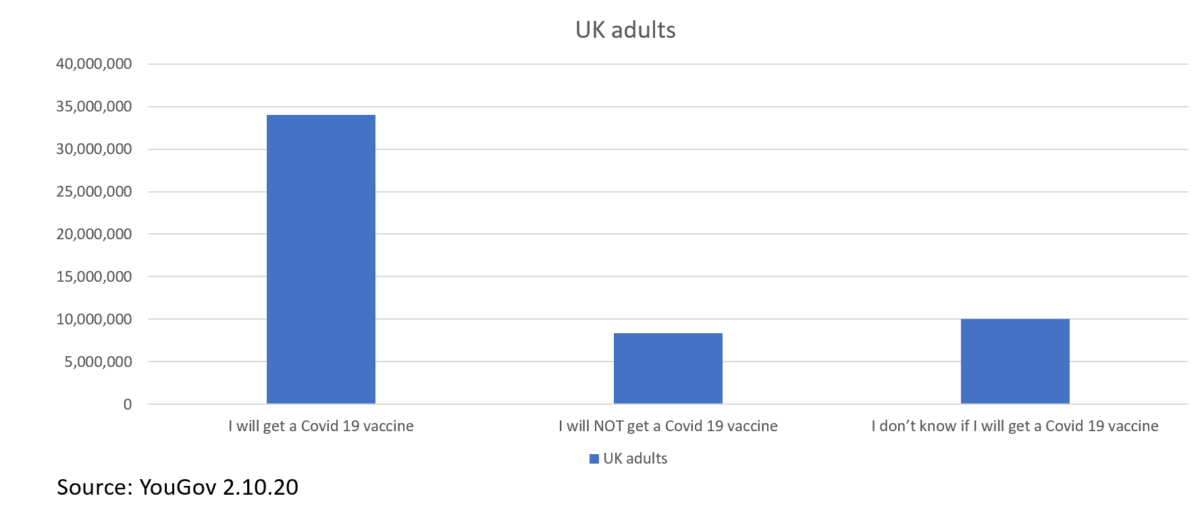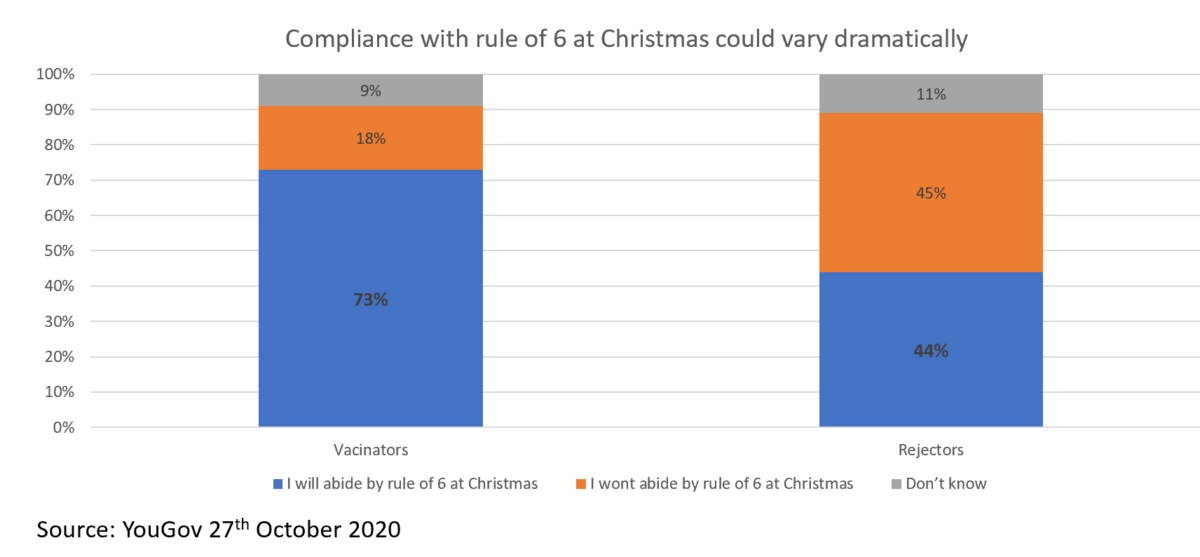The £670,000 paid to PR consultants by the UK Vaccine task force may be their best investment.
Now we’re no apologists for Johnson & Hancock, but we couldn’t help but think that some of the media’s criticism of the UK vaccine task force on their day of triumph was a little unappreciative. Their sin? Spending £670,000 with a PR consultancy to create a media strategy for the vaccination. This announced on the same day that we discovered they had bought us 40 million doses of the first vaccine to be found effective.
The expense seemed to be the primary criticism, so we thought we’d investigate the scale of the potential task, and whether as a nation this might or might not represent value for money…
Let’s start with the scale of the task. No-one has asked us if we will take the Pfizer vaccine since the news broke yesterday, but just five weeks ago YouGov asked their panel if they would take one if and when it became available. The results, shown below, are surprising.

Only 34 million, or 65% of UK adults said they would get vaccinated. 16% of us, or 8.4 million said ‘No’ and 10 million of us are undecided. The consensus view (endorsed by Bloom & Lambert in The Vaccine Handbook, apparently the comprehensive go-to source of information on all-things vaccine) is that we will need to achieve 80% take up of the vaccine to achieve herd immunity. On these numbers we are around eight million short – coincidentally the same number as our rejector group above.
So, who are these eight million, and how much do we need to shift their attitudes and beliefs? How different are they to the compliant 65% mainstream? It turns out, very different.
48% of pro-vaccinators are worried about dying or becoming very unwell from COVID- 19, whereas 42% of rejectors are not at all worried. This translates into support for this latest lockdown. Asked on 30th October, the day before BoJo gave us our new incarceration orders, 70% of vaccinators thought we should have a full national lockdown again, and 56% of rejectors also vetoed the idea of another lockdown.
Possibly more worrying is the credibility of the scientists in each group’s eyes. 55% of vaccinators think the government is paying too little attention to the scientific advice they receive. 3.2 million, or 39% of the rejectors believe the government is paying them too much attention.
So far, so attitude. What about behaviour? One of the most emotive subjects of the season is Christmas and our usual gatherings. Vaccinators once again assert they will be compliant, and if asked limit gatherings to the maximum set. As the chart below shows our potential non-vaccinators expect to behave very differently if forced to choose.

But what has all of this got to do with the row over the £670,000 PR payment?
At The Kite Factory, we are big fans of the OESP planning structure for media: Use Owned where you can – you have already paid for it. Use Earned next – for places you can reach and to use voices not your own. The same logic applies to Shared – it’s another voice telling your story for different credibility, and these opportunities are often not for sale. Then finally use Paid media to amplify and co-ordinate all of the above. We do this to make our clients budgets go further and ensure greater effectiveness.
Given the £210 billion the UK government has spent on Covid-19 so far this year, a few tens of millions on paid media urging us all to get the vaccine is neither here nor there. Their reach should hunt us all down, and the frequency will undoubtedly bore us all to tears. The broader risk however is non-vaccinators rejecting science and advice, and more shouty men in white coats won’t help change their minds. Hearing the message from other sources in different words and voices just might.
If we want 80% take-up, we are about eight million adults short. £670,000 represents an investment of less than ten pence each. That, like many media investment decisions made through the lens of Owned, Earned, Shared, Paid looks like a bargain to us.
